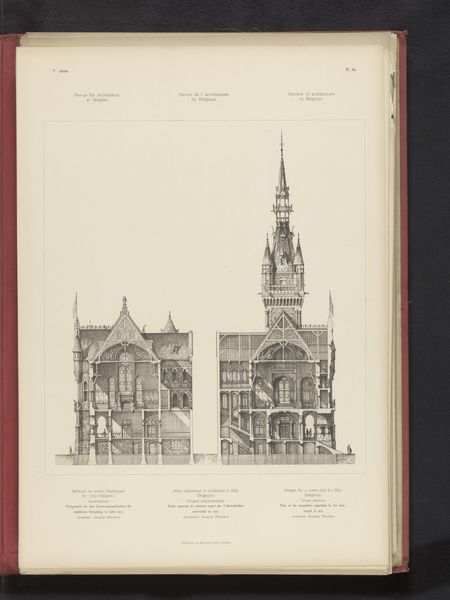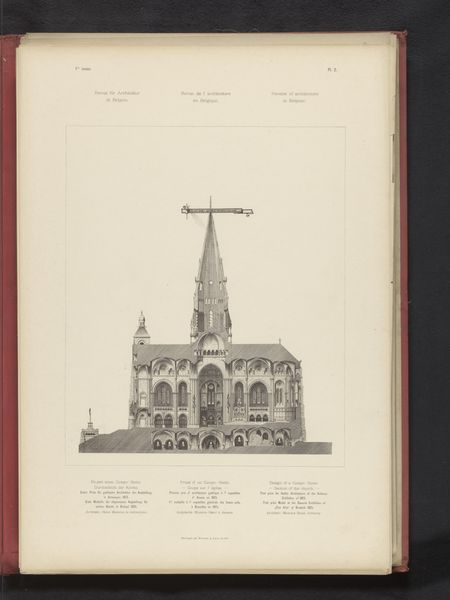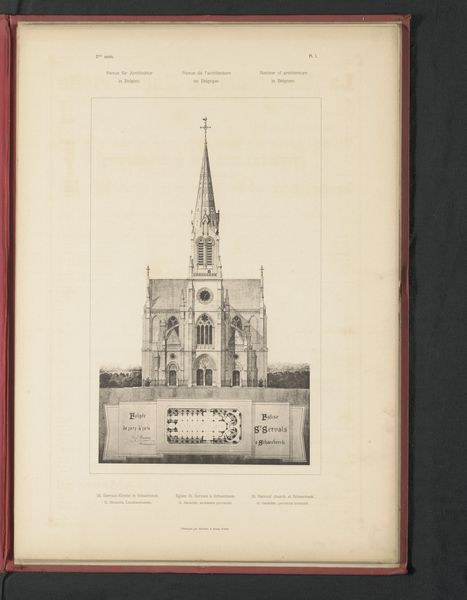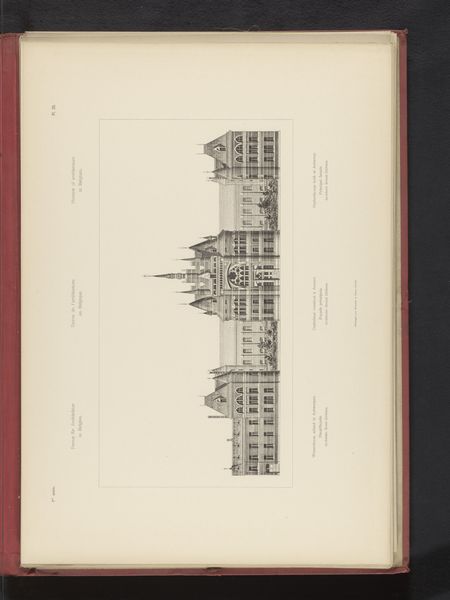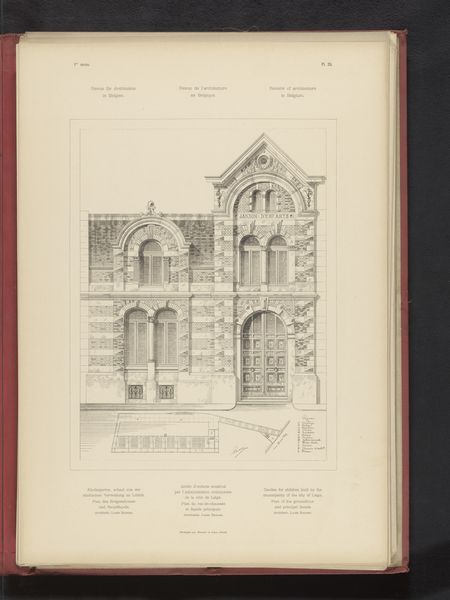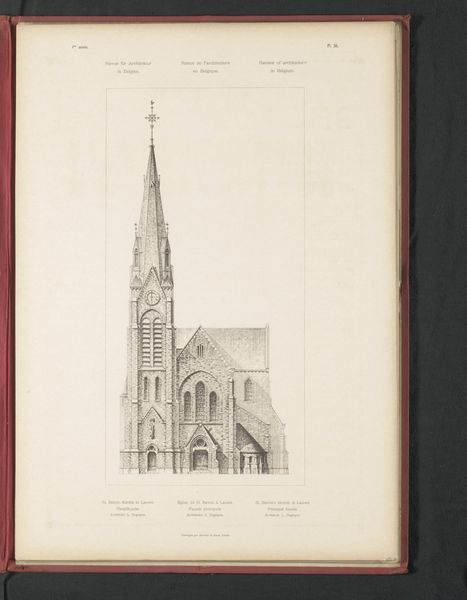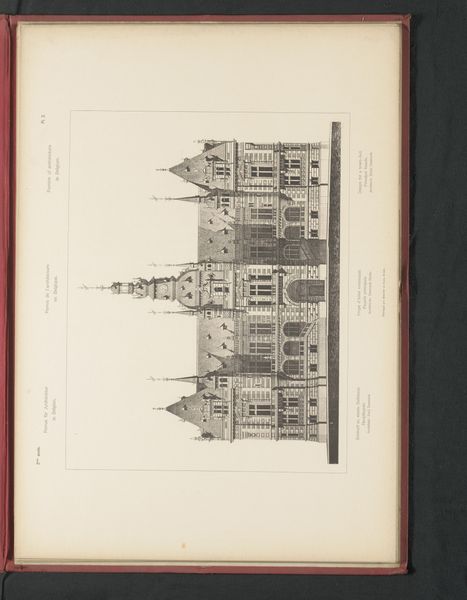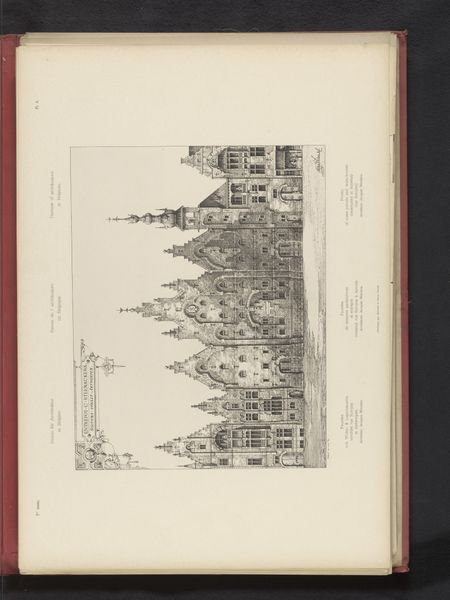
Reproductie van een ontwerp van een stadhuis voor Gilly, België, door Jean-Jacques Winders before 1893
0:00
0:00
drawing, paper, ink, architecture
#
drawing
#
paper
#
ink
#
geometric
#
cityscape
#
academic-art
#
architecture
Dimensions: height 336 mm, width 264 mm
Copyright: Rijks Museum: Open Domain
Editor: Here we have Jean-Jacques Winders’ "Reproductie van een ontwerp van een stadhuis voor Gilly, België" which roughly translates to 'Reproduction of a design of a city hall for Gilly, Belgium', rendered in ink on paper sometime before 1893. It's striking how detailed it is; almost photographic. How do you interpret this work in its historical context? Curator: It’s crucial to recognize that architectural drawings like these are never neutral. They are steeped in the politics and social aspirations of their time. Think about what a town hall symbolizes: civic power, governance, often patriarchal structures. This rendering, with its almost militaristic, castle-like design, speaks to a very particular vision of authority, doesn’t it? Consider, too, that Belgium at this time was solidifying its colonial project in the Congo. Editor: I see your point. The imposing architecture could represent that power dynamic extending beyond Belgium’s borders. Do you see other elements reflecting that? Curator: Absolutely. The visual language it employs – the assertion of strength, order, hierarchy – echoes the rhetoric used to justify colonial dominance. What we need to consider here, who was this architecture *for*, and whose stories and realities were erased or deemed unimportant. Ask yourself, whose voices are missing from the table, metaphorically, in this imagined town hall? Editor: That gives me a lot to consider when looking at architectural plans. Thank you! Curator: My pleasure. Art, even seemingly straightforward architectural renderings, are documents that can teach us how power and ideologies were manifested and legitimized visually.
Comments
No comments
Be the first to comment and join the conversation on the ultimate creative platform.
